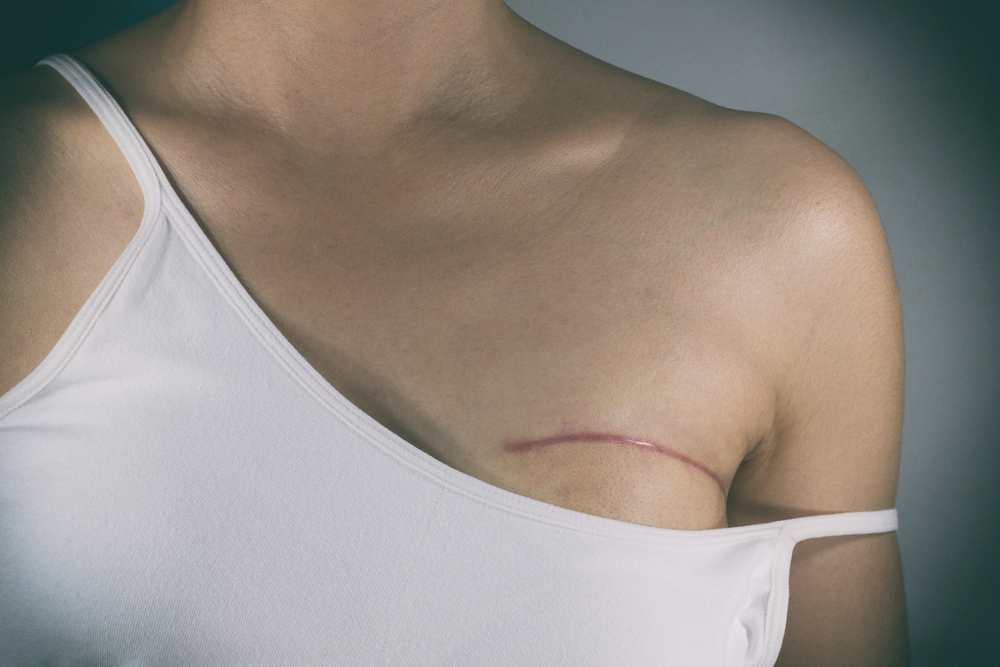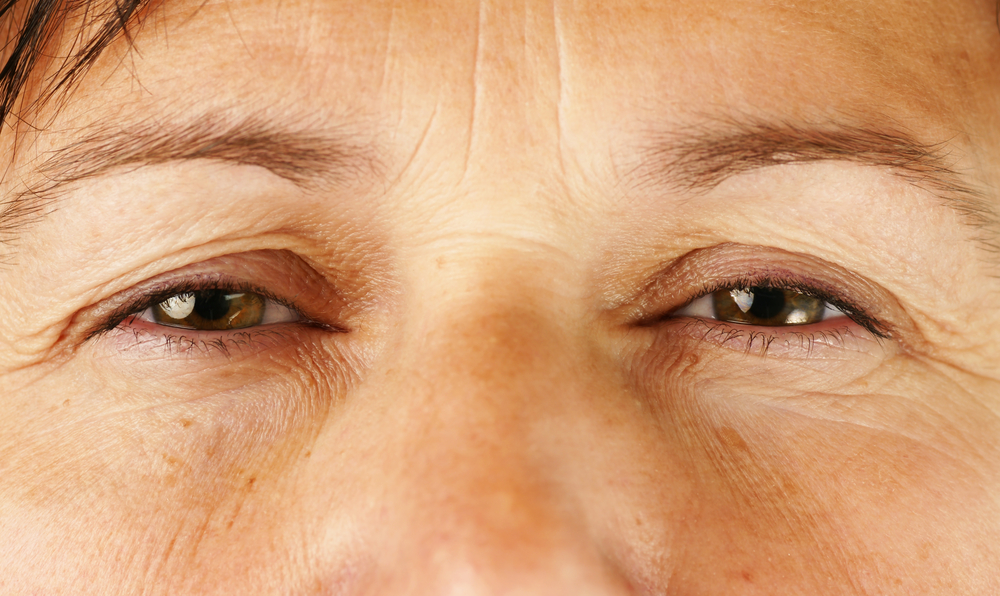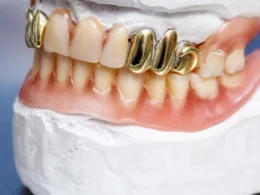This guide offers a starting point to inform yourself about the benefits and drawbacks of breast reconstruction, exploring some of the most pertinent issues you should consider before you begin consulting with a plastic surgeon.
Updated, August 2017
Weighing the Pros and Cons
About one in eight U.S. women will develop a form of invasive breast cancer during their lifetime. For women who undergo a mastectomy as a therapeutic treatment for cancer or as a preventative (prophylactic) measure, the knowledge that their breast (or breasts) can be reconstructed offers a source of comfort.
However, many women wonder if breast reconstruction is the right choice for them. It is important to remember that the procedure is unlikely to transform your life or change how others treat you, so the basis for your decision should rest primarily on what will help you to feel the most empowered, comfortable and content in your own body.
Your decision should also be informed by your oncologist and plastic surgeon’s opinions: factors such as whether your mastectomy is therapeutic or prophylactic, the stage of your cancer, your weight and body shape, and your suitability for artificial or autologous implants (autologous implants are formed of natural tissue from your own body) may all impact on your final decision.
Breast reconstruction can restore the breast mound, shape and volume, and is carried out with the goal of maintaining quality of life without adversely affecting the breast health of the patient, or hindering the detection of a potential recurrence of cancer. Women who have lost a breast or breasts to cancer often choose to undergo reconstructive procedures because the restoration of their breast helps them to feel more normal and feminine, and allows them to wear a wider range of clothing.
Dr. Kelly Killeen, a double-board certified plastic surgeon based in Beverley Hills and an expert in breast reconstruction surgery explains, “A woman’s relationship with her breasts is complicated. How we feel about our breasts is frequently tied to how we feel about our femininity and attractiveness as a woman. Women deserve the best possible outcomes.”
Fortunately, there is excellent quality of care and treatment available for women who are considering breast reconstruction, with doctors and plastic surgeons often working collaboratively to offer women reconstructive treatments individually suited to their needs and preferences.
Nonetheless, although breast reconstruction can replace the appearance of your breasts, it cannot restore their function. If you are contemplating breast reconstruction with the hope of breastfeeding your children, unfortunately the mammary glands that produce milk are removed during a mastectomy. It is also unlikely that you will have full sensation in the breast that has been reconstructed.
Deciding whether or not to undergo breast reconstruction additionally merits careful consideration because of the significant postoperative recovery period required: you may need up to six months before you can return to everyday life and activities. Some reconstructive procedures also demand additional treatments or follow-up procedures.
Breast reconstruction can be a daunting process to contemplate, particularly when you’re already in the midst of dealing with cancer. However, taking the necessary time to weigh the pros and cons, talk with your partner and loved ones, and seek advice from informed and compassionate medical professionals can help you reach a decision you will be happy with.
Breast Prosetheses and Alternatives to Reconstruction
“Going flat” or wearing breast prostheses are two options for women who feel that breast reconstruction surgery is not an option they wish to pursue.
“Going Flat”
Choosing not to replace your breast or breasts is a choice too. Some women who experience breast cancer decide to remain flat for a multitude of reasons. It’s possible they may feel overwhelmed by their diagnosis and prefer to remain focused on their treatment options and recovery from cancer.
Many women who decide against reconstruction view going flat as an empowering decision. Some even choose to decorate their bodies with personalized tattoos instead, in honor of their battle with cancer or to commemorate their breasts.
Dr. Susan Love, an expert in breast health who runs a breast cancer research foundation, acknowledges that at times doctors and surgeons’ enthusiasm for the benefits of breast reconstruction can mean that they don’t talk patients through the option of going flat.
“Surgeons become so proud of what we are able to do that we may have forgotten that not everybody may want it,” explains Dr. Love.
However, other women choose to forego reconstruction due to a lack of information about the options available to them: in a recent survey, up to 70% of women questioned felt they did not have access to the information they needed about breast reconstruction to be able to make an informed decision.
Being informed about your options is paramount and will help you to be cognizant of what is available and best suited to your circumstances. Thus when the time comes to make a decision about reconstruction, you can feel secure in knowing there is no right or wrong choice, just the best choice for you.

RELATED: Why Breast Cancer Survivors Are Foregoing Reconstructive Surgery
Mastectomy Bras and Breast Forms
If you feel that breast reconstruction isn’t the right option for you or you would prefer to delay making a decision, a prosthesis (also called a breast form) can offer an alternative, allowing you to keep the appearance of breasts without surgery. Breast prostheses are a painless and easy way to fill the space where your breast was. It’s as simple as slipping them into your bra or bathing suit with no-one being any the wiser.
Breast prostheses come in a diverse range of shapes, sizes and materials: there are prostheses made from silicone gel, foam and fiberfill/polyfill. Fibrefill or polyfill prostheses are lightweight, machine washable, and can be used in saltwater or chlorinated water. They are often recommended for women who are just recovering from surgery.
Silicone prostheses look heavier and feel more realistic. Women sometimes prefer to use them during sex as they feel more natural. Unfortunately however, they only last for 2 to 5 years, are not suitable to be worn in water as they can rupture, and must be washed by hand.
Custom-made prostheses that are specially fitted to the contours of your body and match the color of your skin are also available. They are often made of silicone or latex, but are significantly more expensive. In addition, health insurance plans don’t always cover the expense of specially made breast forms.
Some prostheses fit into a pocket in a specially designed bra or camisole, while others come with adhesive patches that adhere to the edge of the breast area. There are also prostheses that use magnets; one magnet attaches to your skin with an adhesive patch, and the other magnet is located on the back of the prosthesis. The adhesive patches for this particular type of breast prosthetic last for one week and are then replaced.
You can access information about where to purchase prosthetics from non-profit organizations such as the American Cancer Society’s Reach to Recovery program.
Choosing a Breast Reconstruction Surgeon
Finding a plastic surgeon whom you trust and can develop a rapport with represents one of the most important choices you will make when contemplating breast reconstruction.
Knowing that your surgeon understands the specificities of your case and has relevant expertise with the procedure you are undertaking should put you at ease, facilitate the entire process, and lift some of the weight from your shoulders.
So how do you go about finding such a surgeon?
1. Credentials
Your future plastic surgeon should have at least six years of surgical training, and a minimum of three years of specialized training as a plastic surgeon. She or he should be certified by the American Board of Plastic Surgery (ABPS), a certifying board for plastic surgeons that demands rigorous standards of expertise and training from its members.
ABPS certified surgeons should operate only in accredited medical facilities. They are also required to constantly continue their education and re-schooling in patient safety and new techniques, as breast reconstruction is a rapidly evolving surgical field.
2. Evidence of previous work
Access to evidence of your surgeon’s previous work will provide you with an idea of what your reconstructed breast, or breasts, will look like. Different types of reconstructions have different outcomes, and surgeons specialize in different reconstructive techniques. Some surgeons are more able to minimize scarring and preserve the nipple than others.
While some scarring is unavoidable, Dr. Lisa Cassileth, a breast reconstruction specialist based in Beverly Hills, argues that there are ways to mitigate extensive and ugly scars without compromising the thorough treatment of the cancer site.
“The usual mastectomy makes a horizontal scar across the patient’s chest, removing the nipple and an ellipse of normal skin,” says Cassileth. “The nipple-sparing mastectomy should be done through an incision under the breast, the inframammary crease. It’s hard to find a team that does this, simply because it’s harder to do.”
Looking over the before-and-after photos of reconstructions carried out by different surgeons gives you a realistic sense of what to expect, along with the opportunity to check out the quality of their work.
3. A sense of trust
You should feel comfortable enough to talk to your surgeon about any qualms or concerns you have. Trusting your surgeon allows you to ask difficult questions or seek clarification when you are unsure about something, and receive expert advice in return.
Breast cancer and breast reconstruction can represent a challenging and life-changing experience for many women, and it’s your right to expect a surgeon who will advocate for the best possible outcome for you, not what is easy or efficient for them.
Dr. Kelly Killeen explains, “Our goal is that every woman gets all of the information available to her and isn’t just pointed in the direction that is the easiest, or most comfortable for her treating physicians. We are advocating, not undermining. It’s time to be less worried about hurting feelings and pushing the breast cancer community to demand better treatment. They deserve it and it’s available.”
10 Questions to Ask Your Surgeon
A reassuring chat with your surgeon can help you secure peace of mind before you commit to breast reconstruction. Many women feel nervous about their first consultation with their surgeon and don’t know what kinds of questions they need to ask to get the information they need. In addition, there are possibly issues to consider that many haven’t yet contemplated.
Here is a list of useful preliminary questions you may wish to ask, as suggested by Breastcancer.org:
- Am I a good candidate for breast reconstruction? If so, what type of reconstruction would suit me best?
- Which type of reconstructive procedures do you have the most experience performing?
- What risks or complications could I face from undergoing a breast reconstruction procedure?
- When is the best time for me to carry out breast reconstruction?
- What results can I realistically expect?
- Will I have any feeling in my reconstructed breast?
- Will reconstruction interfere in any way with my chemotherapy or radiotherapy treatment?
- Are there any new reconstruction techniques that I should know about?
- How long will my recovery be?
- When can I expect to return to normal activities?
Breast Reconstruction Costs and Insurance
The cost for breast reconstruction can vary widely, depending on the type of reconstructive procedure you are undergoing. The final price will reflect the surgeon’s fee, the costs of the facility or surgery, anesthesia, prescriptions for medication, medical tests and X-rays.
The cost will also be affected by the experience of the plastic surgeon undertaking your reconstruction, as well as their geographical location.
By federal mandate, if your insurance plan covers your mastectomy, it must also cover the cost of breast reconstruction. It is useful, however, to check with your plan administrator to confirm what’s covered and what’s not in order to resolve any potential issues that may later cause you stress.
For example, it’s useful to verify how many days of hospital stay will be covered, if your healthcare plan covers newer types of reconstructive procedures, and how you should proceed if your desired plastic surgeon is not included in your health insurance providers network.
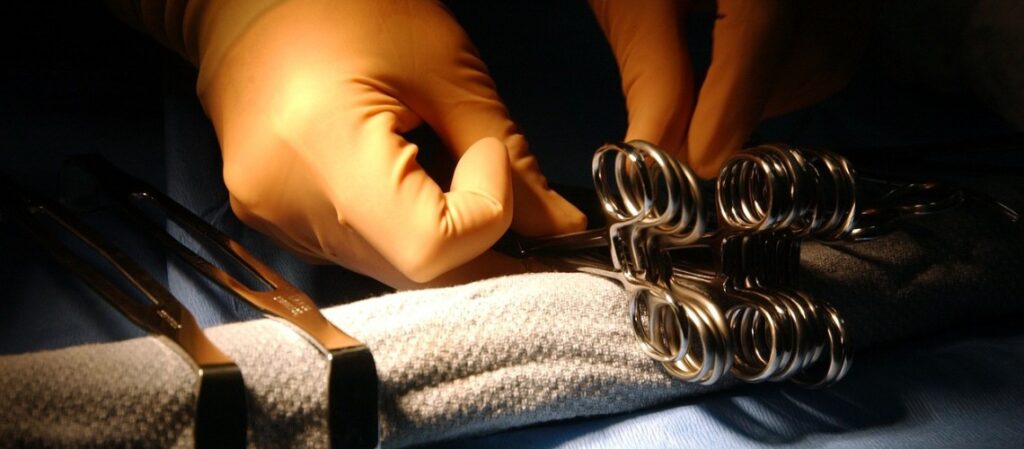
RELATED: When Does Insurance Cover Plastic Surgery?
Choosing a Date for Your Surgery
The timing of breast reconstruction is a frequently discussed and highly debated topic among specialists. There are are three options available regarding the timing of breast reconstruction: immediate, delayed, or delayed-immediate.
Experts recommend that your team of doctors—your breast surgeon, plastic surgeon, oncologists and caregivers—meet to discuss the most appropriate timing for reconstruction given your specific circumstances. This is critical because the type of breast surgery you have will affect the outcome of the reconstruction.
For example, some women may choose to undergo mastectomy instead of a lumpectomy because a mastectomy will offer more pleasing cosmetic results with the reconstructed breast(s).
Los Angeles mastectomy surgeon Dr. Heather Richardson says, “There is a trend here in America for double mastectomy because it provides symmetry (both as the breast is now and in perpetuity) and reduces the small (but real) possibility of having to deal with something in the other breast in the future.”
Making decisions about when to undergo reconstruction during an emotionally stressful and sometimes frightening time can often seem overwhelming. There’s a range of factors that influence the timing of your breast reconstruction, such as the stage, size and location of your tumor, your medical history and general health, if you require radiation following surgery, and your personal preferences.
However, first taking the time to inform yourself about the options, and then discussing and reflecting upon them with your doctor, plastic surgeon and loved ones, will help to empower you in the choice you ultimately make.
Deciding when to carry out reconstruction is influenced by several factors:
- The stage of your cancer
- The facilities and expertise available in your area—for women who opt for immediate reconstruction, a breast cancer surgeon and a reconstructive plastic surgeon are needed to work together to complete the surgery. For this to occur, both require operating privileges in the same hospital. If your procedure requires microsurgery, it’s possible two plastic surgeons will be required. Checking the availability of surgeons and the options offered by your local hospital is critical. In some cases, if you live rurally or semi-rurally, you may need to look further afield to specialized cancer clinics in larger cities.
- Any complicating health issues—such as diabetes, a history of heavy smoking, circulatory problems or bleeding disorders mean it is probable that your doctor will recommend you wait until you are completely healed from mastectomy before considering breast reconstruction.
Immediate Reconstruction
Immediate reconstruction takes place at the time of the lumpectomy or mastectomy. Your cancer surgery and plastic surgery teams will co-ordinate and join forces to complete the two procedures in one combined surgery.
Following the removal of the breast or section by the cancer surgeon, the plastic surgeon will reconstruct the breast using tissue from the body, an implant, or a combination of both.
The majority of the work is completed during one operation, and upon waking, your breast (or breasts, if you have undergone a double mastectomy) will have been rebuilt.
Dr. Kelly Killeen recommends immediate reconstruction. “Women should always be reconstructed immediately if possible,” says Kileen. “It provides better outcomes and is better psychologically. There are very few women who aren’t candidates for immediate reconstruction of some sort.”
Benefits of immediate reconstruction:
- Enhanced cosmetic results in the reconstructed breast(s)
- Less noticeable scarring
- The preservation of a greater quantity of breast skin
- Only one major anesthetic and recovery period
- No time spent without a breast (or breasts)
Ideal candidates for an immediate reconstruction:
- Women who are undergoing prophylactic mastectomy (those for whom mastectomy represents a preventative measure, as they are at high risk of breast cancer).
- Women who have completed or have not undergone radiation therapy as it may impact on the healing of the wound (sometimes causing capsular contracture) or infections.
- Women who do not have inflammatory breast cancer. This is because inflammatory cancers require more extensive removal of the skin, rendering an immediate reconstruction more challenging.
- Women diagnosed with stage I or some stage II breast cancers who will undergo mastectomy but are unlikely to need radiation or other treatments afterwards.
Delayed Reconstruction
Delayed reconstruction takes place some time after your breast cancer treatment has been completed.
Delaying reconstruction allows the body time to recover, as breast reconstruction carried out simultaneously with radiation therapy or chemotherapy can cause the reconstructed breast to alter in color, texture and appearance, or lose volume.
Radiation therapy given after breast reconstruction has additionally been linked to higher incidences of capsular contracture, where the scar tissue hardens and distorts the shape of the breast.
Specialists also point out that appropriate management and treatment of the cancer should take precedence over reconstruction. In cases where immediate reconstruction may delay chemotherapy or complicate postoperative radiotherapy, delayed reconstruction offers a safe option that first treats the cancer, then rebuilds the entire breast after the course of treatment has been completed.
In cases of delayed reconstruction, surgeons make assessments on a case-by-case basis, to determine when is most suitable for you to undergo surgery. In many cases, reconstruction may take place 6-12 months after the mastectomy or lumpectomy.
Reassuringly for many women, there is no time limit regarding when delayed reconstruction can take place, allowing those who initially choose no reconstruction the chance to change their mind should they so desire.
Benefits of delayed reconstruction:
- You can focus completely on your cancer treatment and healing.
- You have additional time to reflect if reconstruction is right for you, and to discuss which type of reconstruction would be most suitable with your surgeon.
- There is less stress and pressure to deal with all at once.
- Surgery is carried out in two separate stages, with an easier and swifter recovery following each procedure.
Ideal candidates for a delayed reconstruction:
- Women who have been recommended to undergo radiotherapy following their lumpectomy or mastectomy.
- Women who do not want to make a decision about reconstruction immediately or are unsure about what to do.
- Women diagnosed with stage III or stage IV cancers who almost always require postoperative radiation therapy or other treatments after mastectomy.
Delayed-Immediate Reconstruction
Also referred to by surgeons as the “staged approach”, delayed-immediate reconstruction allows for some initial reconstructive surgery at the time of mastectomy or lumpectomy, then further reconstructive surgery following the completion of additional cancer treatments.
Delayed-immediate reconstruction involves the insertion of a tissue expander (a balloon-like device that creates a “pocket” for the future breast) beneath the chest wall muscle to preserve the shape of the breast and slowly stretch the skin.
Tissue expanders have a port which can be inflated or deflated with a saline solution. During radiation therapy, many surgeons prefer the breast to be deflated to more effectively target the cancer, but at other times the breast can be re-inflated.
The delayed-immediate reconstruction procedure allows the maintenance of the shape of the breast during radiation therapy, and gives the patient and doctor time to determine the type of breast reconstruction (whether to use implants, or tissue from a donor site on the patient’s body).
Once radiation has been completed and the tissue has recovered (usually 4-6 months after surgery), the tissue expander or implant is removed and replaced with a tissue flap or an artificial implant.
Benefits of delayed-immediate reconstruction:
- It allows for reconstruction to begin at the time of surgery, even if the patient requires further radiation treatment.
- The patient does not have to be without a breast.
- It preserves the shape and as much breast skin as possible, allowing for a more aesthetically attractive implant once treatment is complete.
- The patient and the doctor have time to determine the nature of the future breast reconstruction (such as the tissue donor site for the reconstructed breast).
Ideal candidates for delayed-immediate reconstruction:
- Women who require postoperative radiation therapy but would like to begin reconstruction at the time of their breast cancer surgery.
- Women who are more suited to delayed reconstruction, but do not want to be without a breast.
Autologous Breast Reconstruction
Breast reconstruction surgery employs two main techniques to rebuild the breast: using your own tissue or a “flap” from a donor site on the body (known as autologous reconstruction), or inserting an saline or silicone-based implant (artificial implant reconstruction). Occasionally, the surgeon may combine the two methods.
Autologous breast reconstruction uses bodily tissue generally taken from the abdomen or back, but sometimes from the buttocks or thighs if the back or abdomen prove to be unsuitable donor sites. The selection of the tissue donor site depends on your shape, fat distribution and body weight.
Many plastic surgeons favor autologous reconstruction because it often results in a more natural-looking breast. However, it is not always the most appropriate choice for some patients.
Latissimus Dorsi Flap Reconstruction
One of the most common donor sites used by surgeons utilizes the tissue of the back flap, known as the latissimus dorsi muscle, and overlying skin.
This reconstruction is popular with surgeons as the latissimus dorsi muscle can be swung relatively easily from the back to the front of the body. The muscle is nourished by a good supply of blood vessels from the armpit, rendering it perfect for breast reconstruction.
In most patients, loss of the shoulder muscle does not adversely affect strength or limit shoulder mobility.
One disadvantage of this technique is that while there is often enough skin and muscular tissue that no supplementary implant is required, among thinner women or women with larger breasts the latissimus dorsi may not provide adequate tissue for a complete reconstruction. In these cases, an additional implant may be inserted beneath the flap to enhance breast volume.
Another disadvantage is that the surgery may result in a large scar across the shoulder blade, however, it’s usually in a position that it is easily concealed by clothing. Finally, breast reconstruction using the latissimus dorsi flap is a major operation which requires a significant amount of downtime for recovery.
Ideal candidates for latissimus dorsi reconstruction:
- Women of a heavier build who have small to medium-sized breasts
- Women who do not require too much skin replacement
- Women who are unable to use tissue from their abdomen
Abdominal Flap Reconstruction
The abdomen is often the preferred body donor site for reconstruction tissue, because a large quantity of skin and volume can be extracted to achieve a very natural-looking — and feeling — breast. Different types of flaps taken from the abdomen can be used to rebuild the breast, replacing missing skin and volume.
- TRAM flap: In a TRAM flap procedure, skin, fat, blood vessels and a small piece of muscle is taken from the abdomen. In a pedicled TRAM flap, this section of skin, fat and muscle are tunneled beneath the skin to sit under the chest wall muscles, with the blood vessels left attached to their original blood supply.
- DIEP flap: Similar to the TRAM flap, the same blood vessels and skin are taken, however, they are dissected from the muscle when the flap is extracted. In a DIEP flap, no muscle is used.
- SIEA flap: This operation engages some of the more superficial blood vessels in the abdomen. As is the case with the DIEP flap, no muscle is transferred.
The above flaps are referred to as “free” flaps, because they are completely disconnected from their original blood supply (with the exception of the pedicled TRAM flap). In free flap reconstruction, the flap (composed of skin, fat and sometimes muscle) is taken from one site on the body to form the new breast. Blood vessels from the armpit or breast bone are connected to the arteries and veins of the flap using microsurgery.
Surgeons will ordinarily decide on the particular flap technique prior to surgery, or in some cases, during surgery. Their experience with a given technique may dictate the type of flap that is used. Some surgeons prefer DIEP and SIEA flap reconstructions, as they do not interfere with the abdominal muscles.
Abdominal flap reconstruction can provide the best aesthetic outcome due to the high availability of tissue in this area. Once the surgery has been completed, the shape and appearance of the breast usually remains stable, meaning a lesser likelihood of further surgeries or adjustments. Many women also enjoy the added bonus of a tummy tuck when using their abdomen as the donor site for breast reconstruction.
If a TRAM flap is used for your breast reconstruction, you may initially experience some difficulty when moving from a lying to sitting position due to abdominal wall weakness. Autologous reconstruction using an abdominal flap is a major operation, and you should expect to spend about one week recovering in the hospital, followed by an additional recovery period of several weeks to a month and a half at home.
Reconstruction using abdominal flaps also results in scars across the breast, stomach, and around the navel. Lastly, there is a risk of abdominal hernia and bulging as a result of the surgery. The risk, however, is greater for the TRAM flap procedure than for the DIEP or SIEA flap procedure.
Ideal candidates for abdominal flap reconstruction:
- Women who have enough abdominal tissue to create a flap for one or both breasts
- Women who have had failed implant reconstruction
- Women with no prior history of abdominal surgery
TUG/IGAP/SGAP Flap Reconstruction
For women who are not good candidates for autologous reconstruction using shoulder or abdominal flaps, flaps can sometimes be taken from the upper inner thigh area (referred to as a TUG flap), or sites on the buttocks (IGAP or SGAP flaps).
Use of these flaps is less common, however, and as a rule, flaps from these regions are only used if you’ve had stomach surgery or are very slim.
Implant Reconstruction: How Tissue Expanders Work
Implant reconstruction is almost always a procedure which occurs in stages. When reconstruction begins at the time of mastectomy, a tissue expander (also known as an expander-prosthesis) is inserted under the skin and pectoral muscles of the chest wall.
A small quantity of saline solution is then injected into the expander via a valve to begin the process of skin stretching, however, at this stage there will be very little tissue expansion.
Two to four weeks after the mastectomy, the process of tissue expansion properly begins. You will be required to come into the office weekly or fortnightly to add saline to the tissue expander. The saline implant will slowly stretch the chest muscle and skin to accommodate the future implant.
Once the tissue expander has the correct quantity of saline solution and the skin has sufficiently stretched, the second stage of the implant reconstruction will take place. This usually occurs four to six weeks later, and when radiotherapy and chemotherapy treatment have been completed.
The next stage of implant reconstruction is the replacement of the saline-filled tissue expander with a permanent saline or silicone implant under the skin and muscle of the chest. While both implants are composed of a silicone shell, they can be filled with either silicone gel or saline. Both are safe. Your surgeon will help you choose the best option.
Artificial implant surgery is a relatively straightforward operation, similar to the procedure used in cosmetic breast augmentation surgery, and in most circumstances you can go home after an overnight stay at the hospital.
Benefits of artificial breast reconstruction:
- There is no need for incisions or scars elsewhere on your body.
- The surgical procedure for artificial reconstruction is shorter with a faster recovery time than autologous reconstruction.
- Artificial implant reconstruction can begin immediately at the time of mastectomy, so you do not have to be without a breast.
Disadvantages:
- It is very difficult to recreate an entirely natural breast shape and feel using artificial implants.
- If only one breast is being rebuilt, matching it with the remaining breast can be challenging. While both breasts can appear to match well under clothes, on closer examination they may be different shapes.
- There is a likelihood that implant-based reconstruction will require future operations in order to adjust or exchange the implant.
- Implants may harden, show visible creases or folds, deflate, rupture or leak. Many implants are not lifetime devices and will need to be replaced at some point: normally every 15-20 years.
- Silicone implants require periodic MRI scans to detect leaks or ruptures.
Ideal candidates for artificial implant reconstruction:
- Women with no spare tissue to use for autologous reconstruction
- Women who are not well enough to undergo a larger operation
- Women who do not want cuts or scars elsewhere on their body
Women with relatively small breasts that do not droop (as it can be hard for implants to achieve a natural look and feel with larger breasts). - Women who are having a double mastectomy (as it is easier to achieve symmetry if both breasts are being rebuilt).
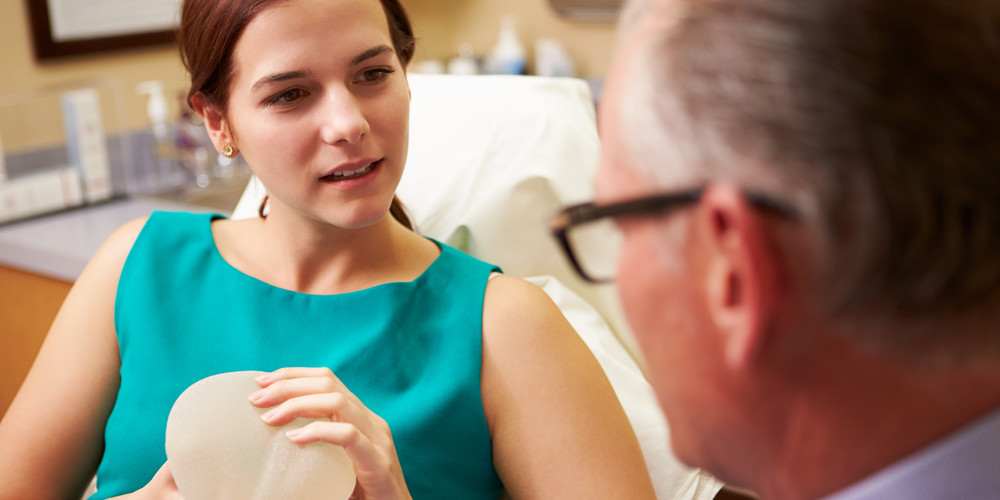
RELATED: Zwivel’s Complete Guide to Breast Augmentation Surgery
Therapeutic Mammoplasty
Therapeutic mammoplasty represents a final variant of breast reconstruction.
For women who do not require the removal of the entire breast but can treat their cancer through a lumpectomy or partial mastectomy (wide local excision), a different type of reconstruction can take place to restore the appearance of the treated breast.
The treated breast can be re-shaped to be smaller than it was prior to surgery, or given additional volume through lipofilling. In some cases, the untreated breast can also be reduced in size and re-shaped to match the treated breast.
This procedure is particularly suitable for women with large breasts who are comfortable with the idea of a breast reduction.
Supplementary and Postoperative Procedures
If you undergo breast reconstruction surgery, it is normal to have minor follow-up surgeries to adjust the shape, size or appearance of the rebuilt breast or breasts. While this is more common in artificial implant surgery, it also occurs in autologous reconstructions.
Follow-up or additional procedures may be carried out to:
- Reconstruct the nipple
- Exchange an implant to better match the size or shape of the other breast
- Reduce or reshape the size of your other breast to match the reconstructed breast
- Reshape or resize the flap used in a reconstruction
- Add volume to your rebuilt breast through fat grafting or lipofilling
Nipple Reconstruction
In recent years, nipple-sparing techniques have been the subject of much debate. Many doctors now argue in favor of preserving the nipple as there is little evidence to support the therapeutic benefits of removing it.
Dr. Lisa Cassileth, a breast reconstruction expert in Beverly Hills, is a passionate advocate of nipple-sparing and raising the aesthetic standards of breast reconstruction. She offers women the following advice:
“Unfortunately, it’s still near impossible to find a surgeon to spare the nipple in a mastectomy, [since it’s] technically more difficult. Don’t take no for an answer, ladies! Patients feel bad when they are diagnosed with cancer and forget to advocate for themselves but this is the most important time to do exactly that! Only with the patients insisting on a better technique will the standard of care improve.”
Dr. Heather Richardson further elaborates, “If tissue analysis shows cancer being retained in the nipple, we don’t recommend leaving it. But if we honestly feel for scientific reasons that the cancer has been dealt with and the tissue left in the nipple is safe, there’s no increased risk in leaving it, much in the same sense that there’s no increased risk in leaving the skin that lies over the breast tissue.”
In cases where the nipple cannot be preserved, nipple reconstruction most often occurs at a later stage to allow swelling to subside and the new breast to become more supple. Nipple reconstruction often takes place three months after radiotherapy or chemotherapy treatment has been completed.
There are two main techniques used for nipple reconstruction:
- Raising flaps of tissue and sewing them together to make a nipple shape, or
- Excising a portion of the nipple on the other breast and using it to construct a new nipple on the reconstructed breast.
At a later stage, a tattoo that matches your original nipple color is applied to mimic the areola. This is a straightforward procedure and can be performed in an outpatient clinic.
Women who decide in favor of nipple reconstruction need to be cognizant of some of the surgery’s limitations. Nipple reconstruction can restore the appearance of the nipple under clothing, however, the sensation of the nipple cannot be recovered. Women who decide against nipple reconstruction can be provided with a stick-on nipple prosthesis of silicone rubber that can be worn under clothes.

RELATED: Zwivel’s Guide to Nipple and Areola Reconstruction
Lipofilling — Fat Grafting
Lipofilling is a more recent technique whereby fat is removed by liposuction from a donor site on the body, cleaned and refined, then used to add volume to another area (in this case, the rebuilt breast). The process takes place using a cannula, or a specialized grafting tube. As the fat is harvested from the patient’s own body, there’s no possibility of the body rejecting it.
Lipofilling has proven a particularly useful adjunct to breast reconstruction as it is a highly effective method of adding volume to a flap reconstruction that is too small. It is also commonly used for women who have undergone lumpectomies or partial mastectomies (wide local excision) and may end up with the treated breast smaller in size than the untreated breast. In such cases, lipofilling simply adds the necessary volume for the treated breast to resemble the untreated breast in shape and size.
Fat can be extracted from areas such as the hips or stomach and used to enhance the size and profile of the reconstruction, filling in any unusual contours or dips visible on the breast. It’s also a straightforward procedure that can take place at the time of other follow-up procedures such as nipple reconstruction. Local or general anesthetic may be used, depending on the quantity of fat to be harvested and the area of the donor site.
However, fat grafting can pose a potential risk, as points out Plano, Texas plastic surgeon Dr. J. Michael Morrisey:
“Fat grafting to the breast is getting some attention as a more natural way to augment the breast, much like fat grafting is used to augment the buttock. The issue with fat grafting to the breast are the effects it has on the natural breast tissue and with mammography and cancer detection. Studies are ongoing to the effects of fat grafting on the breast and the changes is causes. The concern is if these changes can mask the detection of cancers in the breast using mammography.”
If you have concerns about using lipofilling to gain extra breast volume, it’s best to ask your surgeon to talk through any risks with you.
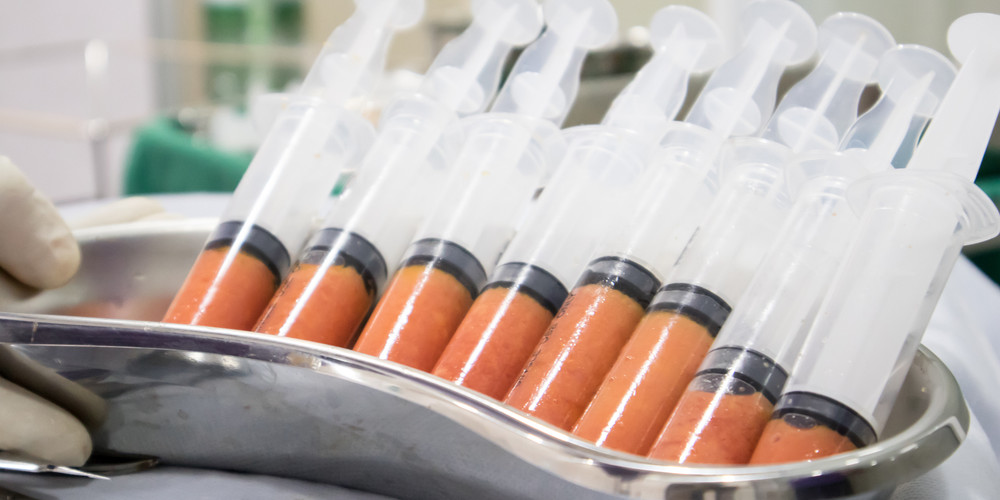
RELATED: Zwivel’s Complete Guide to Fat Grafting
Preparing for Breast Reconstruction Surgery
In the weeks and days leading up to your surgery, there are actions you can undertake to ensure it goes as smoothly as possible, reduce the risk of complications occurring, and facilitate a swift recovery.
- Eat well in the weeks leading up to your breast reconstruction and ensure you have plenty of nutritious and easily consumable food for the weeks post-surgery. Items like soup, hummus, fruit and nuts that are easy to snack on and require little preparation are ideal.
- Delegate responsibilities with respect to child care, pet care and domestic tasks to alleviate stress.
- If you are having reconstructive surgery that uses the TRAM abdominal flap, a specialized chair for the shower can be useful in supporting you as you bathe.
- Co-ordinate a support team of loved ones to help you in the immediate period following your surgery and recovery.
- If you can, try to maintain a light fitness regime to support your wellbeing. Yoga and/or barre workouts are ideal, but be sure avoid any particularly strenuous activities.
- Quit smoking. Doctors and surgeons cannot emphasize enough how critical it is to break this habit in the weeks leading up to surgery. The nicotine and carbon monoxide in cigarettes can affect your blood flow, leading to skin death or necrosis at the surgical site.
- Cease taking aspirin, vitamin supplements and diet pills as they can increase the likelihood of bleeding or swelling after surgery. Some of the more common products and medications to avoid include Aspirin, Advil, Motrin, herbal pills designed to suppress appetite, Vitamin E, garlic, fish oil, echinacea and St John’s Wort. The easiest way to determine if any supplements you consume might inflict adverse effects is to discuss everything you are currently taking with your doctor.
- Ensure you have completed any lab tests you are required to take.
- Check that your medical records are accessible to all the doctors and surgeons who are caring for you. There are multiple physicians who play a role in your breast reconstruction surgery and sometimes you’ll be required to sign a records release form so your plastic surgeon can access information about your schedule of care and health information. Be sure to communicate your treatment plan to your plastic surgeon. It’s critical he or she knows if and when you are receiving radiotherapy or chemotherapy so surgical appointments can be timed and scheduled appropriately.
- On the day before surgery you will usually receive a call confirming your check-in time at the hospital. You’ll also be instructed to not eat or drink anything after midnight—this means no water, candy, mints or gum.
- Remove any dark coloured nail polish. Your nails need to be light to allow the pulse oximeter to work effectively.
- Remove all jewellery and piercings—anything left on the body can result in burns to your skin during surgery.
What to Expect on the Day of Surgery
On the day of your surgery it’s common to feel a mixture of emotions: fear, anxiety, or even excitement if you’ve been looking forward to your reconstruction for some time. Knowing what will happen to you in the moments leading up to, during and after surgery will help you to feel more secure and empowered.
Upon checking into the hospital you’ll be escorted to wait in the preoperative area. Your loved ones will be able to rejoin you in this holding area once you’re checked in and settled.
When your name is called for surgery, you will be taken to the operating suite. A nurse or the surgeon will leave markings on your breast to show where the incisions are to be made.
Your family will be able to wait for you in a designated area and provided with updates on the progress of your surgery by a patient liaison representative. They’ll be notified on the completion of your surgery and should be able to visit you 30-90 minutes after surgery has taken place.
Breast Reconstruction Recovery
Recovery from breast reconstruction surgery occurs in phases, or steps. The first stage of recovery takes place in the hospital. For more complex breast reconstruction procedures, such as the TRAM or DIEP flap surgery, you should expect to spend 3-5 nights in the hospital recuperating. The first few nights will be spent in intermediate care (the level just below intensive care) so a nurse can regularly check the blood supply to your flap.
After several days in the hospital you will be transferred to a regular bed and by this point should feel comfortable enough to start walking a little and eating regular food. For artificial implant reconstruction, however, you will most likely need to spend one night in hospital.
You will have post-operative drains (specifically Jackson-Pratt drains) attached to the surgical site to remove the buildup of excess fluid. These drains will remain in place while you are in hospital and some will even go home with you. A doctor or nurse will educate you about caring for the drains and how to go about your everyday activities.
When you return home, the second phase of your recovery begins. Depending on the extent of your health insurance coverage, for the first week you can expect daily visits from a nurse to monitor your progress.
The following list provides rough estimates of how long you can expect to be at home recovering before returning to work and everyday life. Remember, however, that it’s only a guide. Breast reconstruction surgery, whether autologous or artificial-implant based, is an intense and invasive surgical procedure.
Giving yourself the necessary time to replenish your energy levels and allow your body to heal is vital. Some individuals may bounce back quicker than others, while others may need longer to return to their work and social lives.
Listen to both your body and the advice of your doctor; the experts often advise scheduling more recovery time than you think you’ll need— rushing back to work too soon will only prolong your recovery period.

RELATED: A Husband’s Guide To Mastectomy
Estimated Recovery Times
- Placement of tissue expanders for artificial implants: 2-3 weeks recovery time, but you will undergo weekly or fortnightly expansions until you reach the right size. The first tissue expansion procedure will most likely occur 2-4 weeks after your surgery.
- Removal of tissue expander and placement of artificial implant: 1 week
- TRAM flap reconstruction: 8 weeks (slightly less for a pedicled TRAM flap reconstruction)
- DIEP flap reconstruction: 6 weeks
- SIEA flap reconstruction: 6 weeks
- Latissimus dorsi flap reconstruction: 4 weeks
- TUG flap reconstruction: 3 weeks
- IGAP reconstruction: 6 weeks
- SGAP reconstruction: 6 weeks
Source: Breast Reconstruction Planner, American Society of Plastic Surgeons
10 Tips to Speed up Your Recovery
Your convalescence can be facilitated by knowing how to care for yourself during this period of recuperation.
- Don’t remain in bed all day. Although you are likely to feel exhausted the first few days you’re back at home, being ambulatory and walking around is important. Just be sure to have a caregiver nearby if you start feeling lightheaded when you move around. Once you start feeling stronger, longer walks will be highly beneficial.
- Take your post-operative medication. Follow the instructions you’ve been given by your surgeon.
- Drink plenty of water. Water move toxins through the body, keeps you alert and hydrated, and helps reduce swelling.
- Avoid salty or highly processed foods as they can exacerbate swelling. Wholesome, unprocessed and nourishing foods are wonderful in helping the body to heal.
- Eat foods with natural probiotics like Greek yoghurt, or take probiotic supplement to help avoid constipation occurring. Constipation commonly occurs as a result of pain medications. Having milk of magnesia on hand can also be useful.
- Use an unscented, mild antibacterial foaming soap to clean your incision sites in the shower. Using a shower chair can help if standing for more than a few minutes is uncomfortable.
- Be sure to go to all of your follow-up appointments so your surgeon can monitor your progress and be sure your body is healing properly.
- Finally, rest. Use this restorative time as a chance to engage in restful activities that make you feel good. Read books or magazines, spend time talking quietly with loved ones, watch films you’ve been wanting to catch up on. Make your home a little nest so your recovery period is as pleasant as it can possibly be.
Complications and Side Effects
As an extensive and invasive surgical procedure, breast reconstruction is not without risk. Knowing about the complications that could occur is vital to making an informed decision about whether to proceed with surgery.
The types of complications you could face depend on the breast reconstructive procedure, but your surgeon will explain the likelihood of any of them occurring to you prior to surgery.
Scarring
Scars are inevitable with breast reconstruction procedures, with both autologous and artificial reconstruction resulting in some degree of scarring. However, more extensive scarring is more likely in autologous procedures, such as the TRAM flap reconstruction, which results in scars around the rebuilt breast and lower part of the abdomen.
Nevertheless, scars fade somewhat over time and can be further reduced with the application of topical oils or treatment creams containing Vitamin E. Be sure to hide your scars from the sun while they are fresh and still healing; sun exposure will render them darker and discolor them.
Delayed wound healing
Delayed wound healing is one of the most common problems arising from breast reconstruction surgery. There’s a greater risk of the wound taking longer than expected to heal with larger flap operations where longer incisions are made.
Problems with the wound site are usually minor, but sometimes more significant healing problems like infection, necrosis (skin death), or wound separation occur. Re-operation may be required in these cases.
Issues with the implant
The insertion of the artificial implant can sometimes result in complications such as infection, hardening around the nipple capsular contracture), deflation or leaking, or visible folds or ripples in the skin above the implant.
Your surgeon will talk you through the likelihood of any of these occurring prior to surgery. In some cases, the implant will need to be re-adjusted or replaced.
Blocked circulation to the flap
Flap reconstruction carries its own risks. If the circulation to the flap becomes blocked and blood flow ceases, it’s likely this will occur on the first day while you’re still in the hospital. Doctors and nurses will monitor you hourly for the first 48 hours after surgery to ensure the flap is receiving adequate blood supply.
If for some reason it is not, you will be taken back to the operating theatre for microsurgery to re-connect the flap to the blood vessels. In the unlikely event this cannot be achieved, the flap may need to be removed.
Blood clots (venous thrombosis)
There is a slight risk of blood clotting occurring in the legs or lungs after the operation. However, surgeons do everything possible to prevent this from happening and will encourage you post-surgery to move around as much as possible and sometimes use compression stockings to prevent leg swelling.
Abdominal bulges or hernias
If you undergo abdominal flap breast reconstruction, there is a risk of abdominal laxity (muscle weakness), bulges or hernias occurring.
Fluid retention at the operation site (seroma)
Sometimes, excess fluid can collect beneath the incision site resulting in what’s known as a seroma. Seromas after surgery are not serious but require draining in a clinic.
Satisfaction Rates: What to Expect After Surgery
A 2011 study showed that roughly 63% of women in the United States chose to undergo breast reconstruction following cancer, with estimates compiled in 2016 revealing approximately 80% of women opted for reconstructive procedures.
Various recent studies have all demonstrated that women who have had reconstructive surgery generally feel satisfied with the results, experiencing increased self-esteem, a sense of wholeness, and enhanced psychosocial and sexual well being afterward.
However, while these indicators are encouraging, it’s important to acknowledge that satisfaction arises from a realistic appraisal of what breast reconstruction can actually achieve. Some women feel disappointed immediately following surgery when they realize that their new breast feels different, or that there is little to no sensation in an implant reconstruction and very limited sensation in an autologous reconstruction.
In addition, your new breast, or breasts, are unlikely to perfectly match in terms of size, position, balance or shape. Having realistic expectations about what breast reconstruction can do for you is crucial to your satisfaction with the final result.
You can develop a relatively accurate idea of what to expect by talking to your surgeon prior to surgery, and viewing photos of completed breast reconstruction procedures. It is also important to recognize that sometimes follow-up procedures or adjustments are necessary to “tweak” the results.
Studies further indicate that women who choose to “go flat” are also happy with their decisions. A review of women who chose to go without reconstruction did as well (and sometimes better) with respect to body image, quality of life and sexual outcomes as women who chose to undergo reconstruction.
Ultimately, the best predictor of your satisfaction is ensuring you are well-informed and have made a choice that you know is best for you not only in your current circumstances, but also in the long term.

RELATED: A Single Mom’s Experience with Plastic Surgery After Cancer Treatment
Future Breast Screening
If you’ve had a mastectomy and reconstruction, you will no longer require mammograms on your reconstructed breast (or breasts). There is no data at present to support the argument that screening after mastectomy is useful.
Annual physical exams and routine self-examination are considered sufficient, with imaging only carried out if there is evidence of something unusual in the breast. Click here for a useful guide to performing self-examination.
Post-surgical fat lumps
It is relatively common to find hard lumps in the breast after flap reconstruction. These lumps result from benign fat necrosis and form as a result of fat cells dying, calcifying and forming lumps after the reconstruction procedure. They will often stay the same size, or reduce over time. Occasionally, screening or biopsies may be carried out to confirm that they are of a benign nature.
f you encounter hard lumps after artificial implant reconstruction, it’s highly likely they are the result of capsular contracture. Capsular contracture occurs when a hard tissue “capsule” develops around the implant. Talk to your doctor if you notice any of the above symptoms.
Breast screening after lumpectomy
Screening is required, however, if you still have a healthy breast or have had a lumpectomy. In these cases you will require ongoing annual mammograms or MRIs to ensure the breast (or breasts) are healthy and cancer-free. Special screening is also necessary for artificial breast implants. MRI screening provides an important method of checking that your silicone implant hasn’t ruptured or leaked in the body (which can happen without your awareness).
If you have had an implant placed in a healthy breast to achieve symmetry with your rebuilt breast, the healthy breast with the implant will require extra screening as silicone prevents X-rays from adequately showing the breast tissue around the implant. Make sure your technician has experience imaging breasts with implants.
Frequently Asked Questions
Is breast reconstruction necessary?
Breast reconstruction is entirely optional. It is referred to as an elective procedure, not medically necessary. That said, it’s not considered solely cosmetic either, and by law all insurance plans must pay for breast reconstruction following mastectomy should you choose to undergo surgery.
What types of breast reconstruction are available?
Breast reconstruction can be autologous, using tissue flaps from your own body (ordinarily from the back or abdomen) or artificial, using implants made of silicone or saline. Sometimes a mixture of the two techniques will be used if your bodily tissue is insufficient for the reconstruction.
Why do I need to use a tissue expander?
After you undergo a mastectomy, your breast skin is very thin as a result of cancerous tissue being removed. In order to accommodate an implant, the breast skin needs to be slowly and gently stretched. The tissue expander prosthesis helps this process.
I have to undergo radiotherapy. Can I still have reconstruction?
Your reconstruction surgeon is the best person to advise you on how radiotherapy will affect reconstruction. Generally, however, women who have artificial implants and undergo radiation face a higher risk of complications, such as capsular contracture. Most surgeons advise completing radiotherapy treatment prior to undergoing breast reconstruction.
My breast cancer treatment requires chemotherapy. Can I still undergo breast reconstruction?
Women who require postoperative chemotherapy are still candidates for implants, but the timeframe for reconstruction will change slightly. The second stage of artificial implant surgery, for example, will be postponed until after you’ve completed chemotherapy and your body has had time to recover.
How long will it take me to recover from breast reconstruction surgery?
Recovery can take anywhere from 1 to 6 months, depending on the type of reconstructive procedure you’ve had carried out. Recovery depends on the individual; if you are in a good state of health and resilient, you may bounce back and return to everyday life sooner than expected. The most important thing is to take all the time you need to allow your body to heal.
How long will I need to use surgical drains at home?
JP (Jackson Pratt) drains are placed beneath the skin at the surgical sites to remove blood and other fluids that may collect. Drains are vital to expediting the drainage process and decreasing the chance of infection. Drains are inserted during surgery and some will likely go home with you. Most women require drains for a period between 1 and 3 weeks. They require emptying and scrupulous cleaning and you also need to keep track of the daily total of fluid that amasses.
I would prefer autologous breast reconstruction. Can I choose which flaps are used?
While some women would prefer to choose the donor site for the flap, this is not always possible. Your surgeon will select the flap based on the anatomy of your blood vessels and tissue availability, but will also take what should provide the most aesthetically attractive result into consideration. The donor flap is usually decided prior to surgery, however, in some cases it will not be finalized until the surgery has begun.





